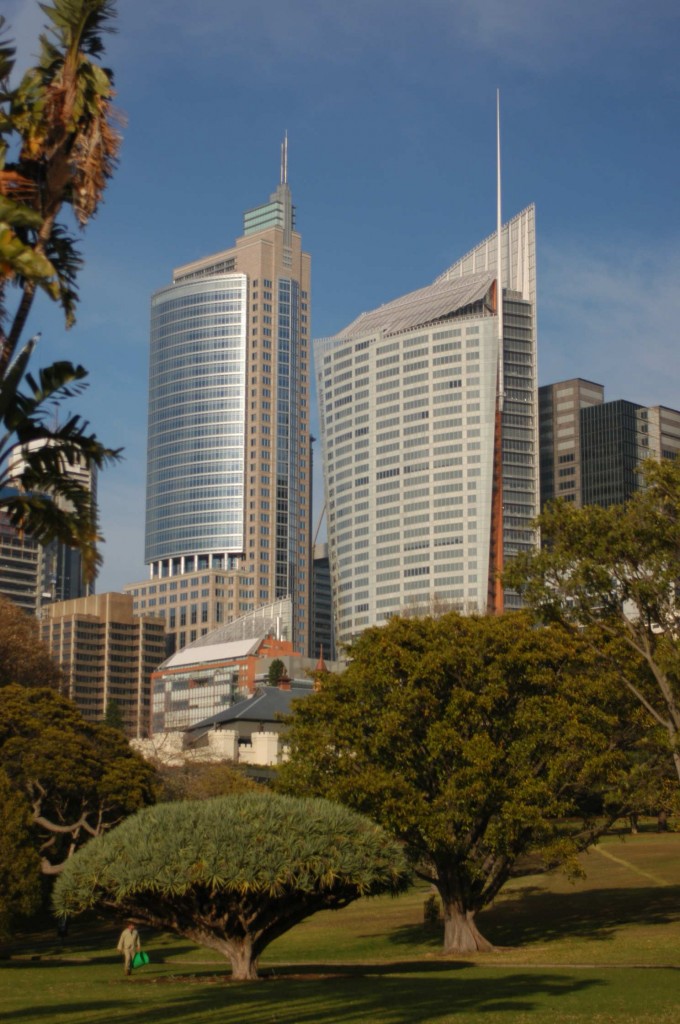Sydney is the capitol of New South Wales and the center of a metropolitan area with a population of almost four million people. Downtown Sydney is home to numerous historic landmarks that the City has attempted to preserve over the decades. To that end, the City adopted a Heritage Floor Space mechanism to encourage the conservation and ongoing maintenance of heritage resources in Central Sydney. After conservation has been completed on a heritage property, the City can award Heritage Floor Space (HFS). This HFS is then used at receiving sites to exceed the floor area limits that would otherwise apply.
The market for high-rise offices has made the TDR program in Sydney, Australia very active.
HFS can only be awarded to a property that meets the following criteria.
1) It must be listed as a Schedule I heritage item pursuant to the Central Sydney Heritage Local Environmental Plan 2000.2) It must be located within the Central City or City Edge zones of the Central Local Environmental Plan 1996.
3) It must be built before the 1957 amendment to the Height of Buildings Act of 1912.
To qualify for HFS, the owner must submit an application and a Conservation Management Plan. This plan includes a history of the building and an explanation of the property’s historical significance. The plan also details the work needed to restore the historic integrity of the property including the removal of inappropriate remodeling. Once the conservation work is completed, deed restrictions are recorded on the property that restrict future alterations and assure the regular maintenance of the building in accordance with the Conservation Management Plan. Then the HFS for the conserved property is recorded on the city’s HFS Register. HFS can be awarded in stages if a heritage item requires extensive conservation work.
Two formulae are used to calculate the amount of HFS to be awarded to a heritage item. In one of these formulae, the lot area is divided in half and multiplied by the maximum floor space ratio allowed to the subject property by the zoning code. However, the City Council reserves the right to reduce the HFS award if there are elements that detract from the significance of the building.
Receiving site buildings must be located in Sydney’s City Centre and be at least 55 meters in height. The City Council can allow the allocation of HFS to developers who apply to exceed the floor area allowed by the code’s floor area ratio limitations for the site in question. In terms of process, a purchaser of HFS conveys a copy of the signed deed as evidence that the HFS has been purchased and the City sends a letter to the purchaser, confirming the allocation of HFS. Sales prices were recorded at $1,175 (AUS) per square meter of HFS in 1990. In 2004, the average sales price was $550 (AUS) per square meter of HFS.
The Sydney Heritage Floor Square Update (www.cityofsydney.nsw.gov.au) documents recent awards, sales and allocations of HFS. It also includes a summary of the HFS market. This summary reveals that the Sydney HFS program has been very active. As of December 31, 2003, restoration/conservation work had been completed and deed restrictions recorded on 54 heritage buildings resulting in the award of 215,716.5 square meters of HFS. In addition, development applications had been approved for 41 additional buildings by the end of 2003, representing an additional 151,689 square meters of potential HFS, but the HFS had not yet been awarded because the conservation work was not completed and/or the deed restrictions had not yet been recorded. As of the end of 2003, the Sydney program had experienced over 100 individual allocations of HFS to purchasers. These allocations exceed the total square meters awarded to heritage sites because of some purchasers resell their HFS for ultimate use at a receiving site project that requires HFS. As of the end of 2003, 34 development applications requiring the purchase of 30,735 square meters of HFS remained outstanding.

